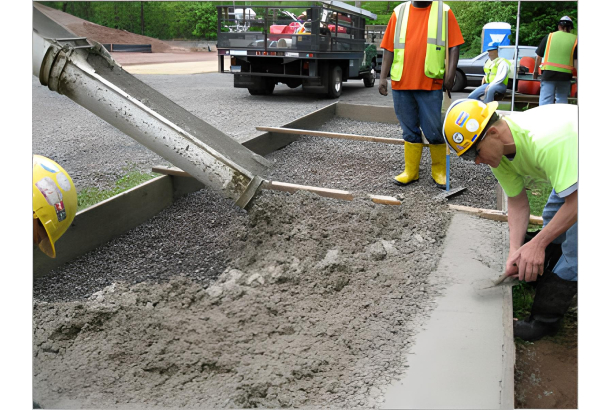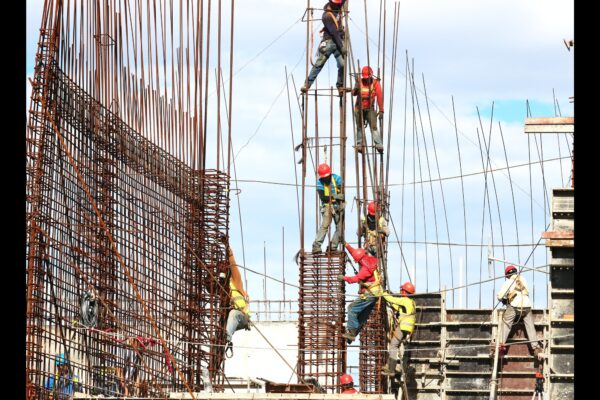by Khushbu Lakhotia, Director, India Ratings & Research
Cement demand is likely to grow 5-7% yoy in FY25 (five-year CAGR: 5.5%), led by a robust infrastructure demand and a steady demand from the housing and commercial segments, although the pace of growth would be lower than FY24 given the government’s infrastructure push ahead of the general elections in 1QFY25
Indian cement sector outlook remains stable for FY25, in view of robust demand fundamentals, benign input costs and comfortable balance sheets. These factors would keep the sector in good stead, despite the increasing competitive intensity and a large supply pipeline which is likely to put pressure on cement prices.
Demand growth to remain healthy: Cement demand is likely to grow 5-7% yoy in FY25 (five-year CAGR: 5.5%), led by a robust infrastructure demand and a steady demand from the housing and commercial segments, although the pace of growth would be lower than FY24 given the government’s infrastructure push ahead of the general elections in 1QFY25. The cement demand to GDP growth multiplier is likely to moderate to long-term average of around 0.9x in FY25, from an elevated level of around 1.2x in FY24.
The infrastructure segment, which accounts for around one-fourth of the cement demand, would remain a key growth driver for the sector in FY25. The interim budget of FY25 saw a 17% increase in the capital expenditure to INR11.1 trillion over the revised estimates of FY24, indicating a continuous focus on infrastructure building. The execution of the budgeted capex would, however, remain a monitorable, given that only 86% of the budgeted capex in FY24 is likely to be achieved as per FY24RE.
Housing is the biggest constituent of cement demand, accounting for two-third of India’s cement consumption. Around half of this demand is constituted by rural housing (excluding affordable housing), which is largely driven by the performance of the agricultural sector. Cement demand from this segment could register a low-to-mid single digit growth rate in FY25, but a lower/uneven monsoon could affect rural spending with real wage growth in past few years remaining muted.On the urban housing side, with prices expected to further increase over FY25, albeit moderately, affordability levels are likely to remain challenging, leading to deferment in purchases. As a result, growth in urban housing could moderate in FY25.
Region-wise, structurally east remains a high-growth potential market, owing to its under penetration with low per capita consumption of cement though the region is likely to have underperformed in FY24. Central is another underpenetrated region with a meaningful housing shortage. Growth in the Western region in FY25 would be driven by a growing infrastructure and commercial demand coupled even as the pace of overall demand growth could taper down. After being among the better-performing regions in FY24, led by demand from road projects and commercial segments, North is likely to see demand growing in mid-to-high single digit in FY25. The south market is characterised by a large non-trade demand which is likely to be affected in FY25 with the ongoing elections.
FY25 to witness decadal high supply addition: On the supply side, large additions are lined up as companies focus on gaining market share, increasing the competitive intensity in the sector. Expansions of around 160mnt have been planned over FY24-FY26 but only 75-80% of it is likely to come on stream. Capacity additions in FY25 could surge to around 45mnt (FY24P: around 40mnt), highest since FY10, implying an addition of around 1.7x over the demand. However, the implied three-year supply CAGR of 7% would be slightly lower than the likely demand CAGR of 8% over FY23-FY25, implying range-bound capacity utilisations of 67%-68%. Interestingly, clinker utilisations have been 800-1,000bps higher than cement utilisations, indicating a higher effective utilisation rate. Again, announced clinker additions are only half of the cement additions though typically 0.65x of clinker is needed.
North is likely to remain the most balanced region, with capacity utilisations remaining the highest in the country while utilisations in the western region could witness some improvement in FY25 though the influx of surplus cement from the neighboring South market remains a concern. The reverse is true for central India where a large pipeline is likely to weigh on the otherwise strong utilizations while east is likely to witness subdued capacity utilisations in the near term, before demand growth catches up, resulting in subdued profitability in the region. Southern market would continue to witness the lowest capacity utilisations of around 60%.
Consolidation to increase amid increasing competitive intensity: FY24 has witnessed multiple acquisition announcements, totalling around 20mnt of cement capacity, 90% of which was done by the top two players. This is in line with expectation of an increasing consolidation in the sector, given the intensifying competition for market share. The increasing competition is also reflected in the medium-term capacity targets of all large players, ranging from 50%-200% increase in capacity by 2030. However, this proportion of expansion would not be possible organically as the capacity would not be absorbed by the market and resource constraints could impede expansion in some regions. Availability of adequate limestone reserves would also be a key determinant in the fructification of these plans, given that reserve availability could be limited in geographies such as North and East in addition to a massive increase in the royalty of limestone won through auctions. These factors make the market ripe for further consolidation.
The capacity share of top five players, which had increased only 100bp over the 10-year period of FY11-FY20, rose 100bp in the subsequent 4 years and is likely to increase further by FY25-FY27. Given the high fragmentation and a large number of small-to-mid sized players, the southern market offers a high potential for inorganic expansion.
Benign costs to cushion profitability amid pricing pressures: After recovering to a little over INR1,000/mt in FY24 (FY23: INR850/mt) led by the softening of fuel costs, the EBITDA/mt of cement companies could decline a little to INR900-950/mt in FY25 owing to lower realisations even as absolute EBITDA may remain flattish. While a continued cost reduction led by soft fuel prices and an increase in the proportion of green energy would support profitability, realisations would be under pressure.
Cement prices are likely to witness single digit decline in FY25 as companies focus on increasing their volumes amid the influx of decadal-high capacities and due to a moderation in demand growth with the general elections in 1QFY25. Exit prices of March 2024 have been lower than the FY24 average, given the continuous monthly decline in 4Q. However, input costs are likely to remain benign. After hitting a historical high of USD430/mt in 2QFY23 as the Russia-Ukraine conflict affected supplies, coal prices cooled off to USD130/mt in March 2024, providing respite to cement makers. Coal prices are likely to remain range-bound with warmer weather forecasts in the US and Europe, stable stock levels, decreasing prices of natural gas and lower import demand from China and India. With most companies focusing on alternative energy sources, a higher share of green energy (waste heat recovery systems/solar) in the power mix could provide additional cost savings.
Sector capex could increase 25%-30% yoy in FY25 as the capex intensity is likely to be elevated over the near-term, rising to around 15% of the revenue in FY25 (FY18-FY20: 9%). Ongoing projects have adequate funding back-up in the form of tied-up term debt and internal accruals and large companies continue to get long-tenor loans (extending beyond 10 years in some cases) with adequate mortarium and a ballooning structure which provide them sufficient headroom to ramp-up the capacity. With the continued capex, the sector leverage (net debt/EBITDA) is likely to increase a little in FY25 after an improvement in FY24, but remain at comfortable levels.
Post Views: 1,076
















